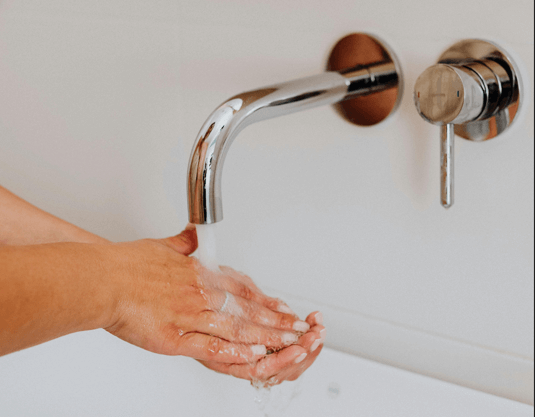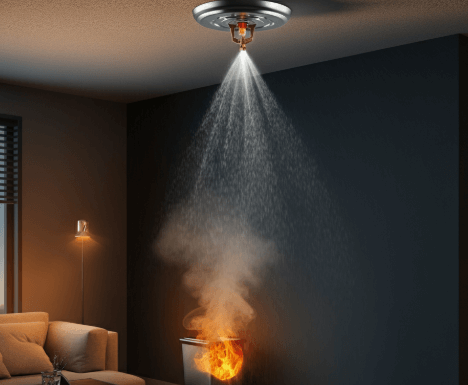Have you ever wondered how water reaches the top floor of a tall building or how wastewater safely drains away? The answer often involves a crucial component that most people never see, which leads many to ask, “What is a riser in plumbing?” Essentially, a riser is a vertical pipe that transports water, waste, or other fluids between different floors, acting as the primary artery of a building’s plumbing system. These pipes are vital for everything from your clean water supply and drain stacks to fire sprinkler systems. In fact, for every story a pipe travels upward, water pressure drops by about 4.3 PSI, making correctly designed risers essential for maintaining adequate flow and safety. Understanding this helps answer the question, “What is a riser in plumbing?” and why it’s so important for your property’s code compliance and functionality. For property owners facing complex plumbing repairs or considering a sale, navigating these systems can be a major challenge. Steve Daria and Joleigh are experienced real estate investors and cash land buyers who focus on providing homeowners with simple solutions to their problems. If you’re dealing with plumbing complexities or want an easy way to sell your property as-is, book a free discussion with them today.
Why are riser pipes important in a house?
Riser pipes are incredibly important in a house because they act as the main arteries of your plumbing system, moving clean water up and wastewater down between different floors.
They ensure you have steady water pressure on upper levels, which is crucial since pressure can drop by about 4.3 PSI for every story a pipe travels upward.
Properly functioning risers protect your family’s health by preventing backflow and ensuring waste is removed efficiently, and in many homes, they also supply water to fire sprinkler systems.

Understanding “What is a riser in plumbing?” helps you see why the design of risers, along with proper valves and maintenance, is so critical.
You should watch for practical signs of trouble, such as low pressure upstairs, wall stains, gurgling noises, or rust flakes in your water.
If you notice any of these issues, it is wise to call a licensed plumber for an inspection, pressure testing, or potential replacement.
Following their expert advice is the best way to address problems before they become severe.
Ultimately, well-maintained risers ensure your home’s plumbing is efficient, safe, and reliable for years to come.
Get Started: Get Your Cash Offer Below…
We are direct land buyers. There are no commissions or fees and no obligation whatsoever. Start below by sharing where your property is and where we can send your offer…
What are common signs of a failing plumbing riser?
Failing plumbing risers often reveal themselves through subtle but persistent signs that homeowners should not ignore.
One of the most common indicators is consistently low water pressure on the upper floors of your home, as water pressure naturally drops as it travels higher.
You might also notice sudden temperature fluctuations in your shower when another faucet is used, signaling a pressure imbalance.
Recurring leaks or mysterious water stains appearing on walls and ceilings are direct warnings of a compromised pipe.
If your water comes out rusty or discolored, it could point to internal corrosion within the riser itself.
Understanding “What is a riser in plumbing?” helps you connect these issues to the vertical pipes running through your walls.
Other red flags include gurgling or hammering noises from the plumbing, musty smells indicating hidden mold from a slow leak, and unexplained increases in your water bill.
If you spot an active leak, shut off your main water supply immediately and call a licensed plumber for an inspection, as pinhole leaks and corrosion can cause significant damage over time.
What are the different types of plumbing risers?
- Cold Water Supply Risers: These vertical pipes carry clean, cold water from your main water line upward to fixtures on different floors. They are essential for supplying water to your sinks, toilets, and showers throughout the house.
- Hot Water Supply Risers: Similar to cold water risers, these pipes transport hot water from your water heater to upper-level bathrooms and kitchens. Understanding “What is a riser in plumbing?” includes knowing that this type ensures you have consistent hot water pressure where you need it.
- Drain/Waste Risers: These larger-diameter pipes carry wastewater and sewage from your fixtures to the main sewer line. They rely on gravity to safely and hygienically remove waste from your home.
- Vent Risers: Vent risers work with drain risers by allowing air into the plumbing system, preventing vacuum conditions that can stop water from draining properly. Asking “What is a riser in plumbing?” is incomplete without considering these pipes, as they are essential for stopping sewer gases from entering your home.
- Fire Sprinkler Risers: In buildings equipped with fire safety systems, these dedicated risers supply water directly to the sprinkler heads on each floor. They are kept under pressure to ensure an immediate water supply in the event of a fire.

Should I repair or replace a damaged riser pipe?
Choosing to repair or replace a damaged riser pipe depends on how bad the damage is, what the pipe is made of, and where it’s located.
Minor issues like a single, accessible leak or a loose fitting can often be repaired quickly and affordably by a professional.
However, for problems like widespread corrosion, repeated leaks in the same area, or pipes made of outdated materials like lead or galvanized steel, replacement is usually the smarter long-term solution.
Understanding “What is a riser in plumbing?” helps clarify why issues hidden behind walls, such as pinhole leaks that cause mold, often require full replacement to prevent severe water damage.
Given that water pressure drops with height, symptoms may appear on upper floors first, signaling a systemic problem.
A licensed plumber can inspect and run a pressure test to accurately identify the problem.
They can provide a detailed estimate comparing the costs and warranties for both repair and replacement, helping you weigh the options.
If you discover an active leak, immediately shut off your main water supply and document the damage for insurance purposes.
Ultimately, choosing replacement often provides greater peace of mind and proves more cost-effective over time by ensuring your system’s safety and reliability.
Who should I hire to work on a plumbing riser?
- Licensed Residential Plumber: For most single-family home riser issues (leaks, pressure problems), call a licensed, insured residential plumber first. They diagnose, repair, and replace risers in accordance with local codes.
- Plumbing Contractor: For large projects, multiple floors, or major renovations, a plumbing contractor is ideal. They manage complex tasks, coordinate teams, and handle the extensive work needed for full riser replacements in larger buildings.
- Plumbing Engineer: For new construction or complex retrofits in tall buildings, a plumbing engineer may be needed for initial design and calculations. Understanding “What is a riser in plumbing?” from an engineering perspective ensures the system is designed to handle pressure drops and flow requirements correctly.
- Fire Protection Contractor: If the issue involves a fire sprinkler riser, hire a certified fire protection contractor. They ensure these life-safety systems stay fire-code compliant and work properly in an emergency.
- Property Manager or HOA: If you live in a condominium or apartment, riser pipes are usually a common element. Your first point of contact should be the property manager or HOA, as they are responsible for hiring contractors and managing repairs for the building.
What maintenance does a plumbing riser need?
Even though plumbing risers are durable, regular maintenance is essential to avoid big failures and expensive water damage.
Routine care starts with annual visual inspections for any signs of corrosion, leaks, or water stains on the walls and ceilings where risers are located.
You should also monitor your water pressure, especially on upper floors, as this is often the first place where issues appear.
Understanding “What is a riser in plumbing?” helps you connect symptoms like pressure drops to the health of these vital vertical pipes.
Periodically flushing lines can clear sediment buildup, and it is wise to test shut-off valves to ensure they operate smoothly in an emergency.
If you notice rusty water, gurgling sounds, or musty smells, document them with photos and dates to track patterns.
For risers in unheated spaces like attics or crawlspaces, check that insulation is intact to prevent freezing.
To ensure long-term reliability, schedule a professional inspection with a licensed plumber every few years.
A professional can run a pressure test to catch small problems early, helping you avoid leaks, save money, and keep your plumbing system working longer.
Takeaway
- Definition and Function: A riser in plumbing is a vertical pipe that carries water, gas, or waste between floors in a building. It connects horizontal supply lines to fixtures, ensuring consistent water flow and pressure across multiple levels.
- Types of Risers: The main types of risers are water supply, drainage, and vent risers. Each type serves a unique function, from delivering clean water to safely removing wastewater and balancing air pressure in the system.
- Material Options: Risers can be made from materials like copper, PVC, PEX, or galvanized steel. The choice depends on the building’s plumbing design, pressure requirements, and local code regulations.
- Common Applications: You’ll find risers in residential, commercial, and industrial plumbing systems. They’re vital for multi-story buildings, ensuring efficient water distribution to bathrooms, kitchens, and fire suppression systems.
- Maintenance Importance: Regular inspection and maintenance of risers prevent leaks, corrosion, and water pressure issues. Proper maintenance extends the system’s lifespan and ensures reliable plumbing performance throughout the property.
**NOTICE: Please note that the content presented in this post is intended solely for informational and educational purposes. It should not be construed as legal or financial advice or relied upon as a replacement for consultation with a qualified attorney or CPA. For specific guidance on legal or financial matters, readers are encouraged to seek professional assistance from an attorney, CPA, or other appropriate professional regarding the subject matter.
